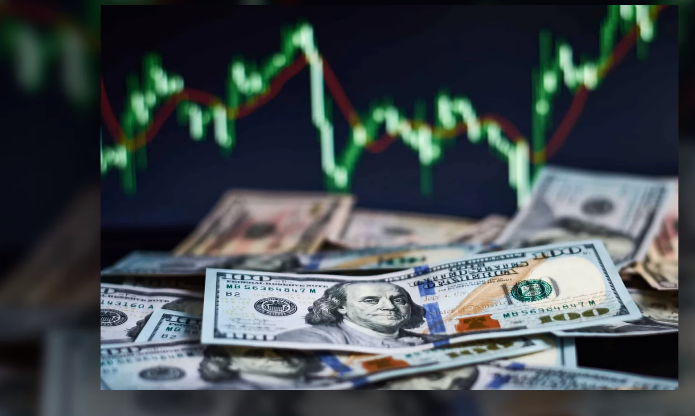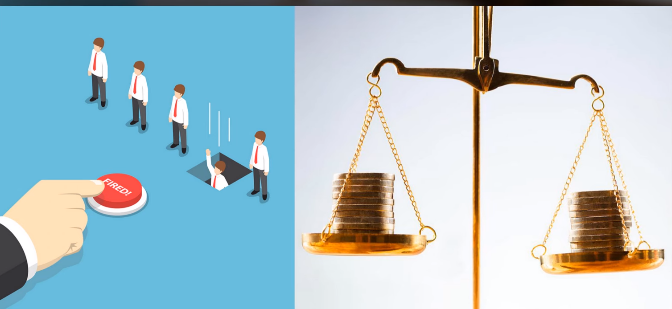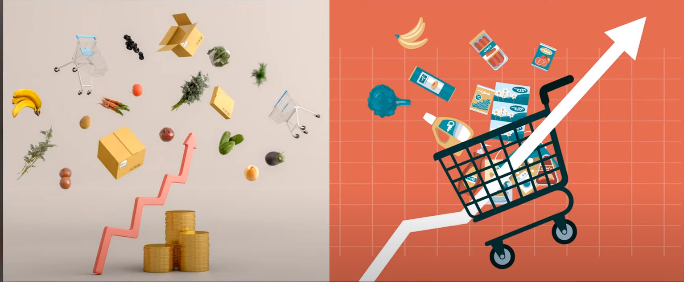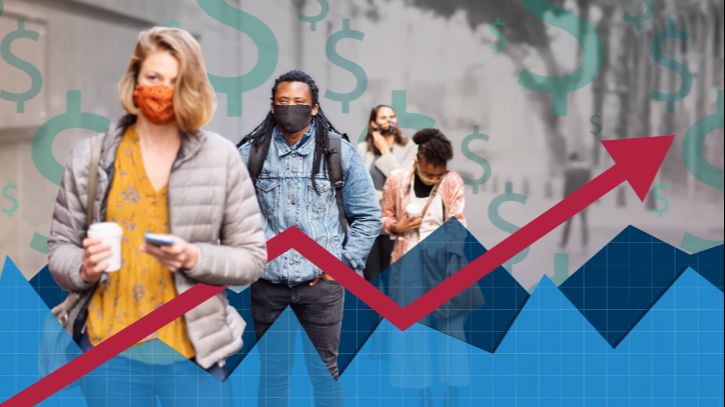Inflation has always been a controversial topic in the field of economics. Even the use of the term "inflation" carries different meanings depending on the context. A significant number of economists, entrepreneurs, and politicians argue that a moderate level of inflation is necessary to drive consumer spending. They argue that increased spending plays a key role in promoting economic growth.
The Federal Reserve (FED) often aims to control inflation at a moderate level in the long term. Their view is that slow price increases will help businesses maintain profits and at the same time, prevent consumers from waiting for prices to drop before making purchasing decisions. Some opinions even suggest that the primary function of inflation is to prevent deflation - a phenomenon likened to the "nightmare" of the economy.
However, on the contrary, many people believe that inflation does not bring many benefits and can even be a barrier to economic development. Rising prices make accumulation more difficult, pushing people into risky investment choices to increase or at least preserve their assets. This perspective also emphasizes that inflation may benefit certain groups of businesses or individuals but disadvantage others. So what is the actual effect of inflation? And why shouldn't it be zero?
Understanding Inflation

The term "inflation" is often used in everyday life to describe the rising prices of essential items such as oil or food. For example, when the price of oil rises from $75 to $100 per barrel, the input costs for businesses and transportation costs also increase. This creates a chain effect that pushes the prices of many other items up to offset costs. However, economists have a deeper view of inflation. Accordingly, inflation is defined as the result of the interaction between the supply and demand for money.
In other words, when the amount of money in circulation increases, the value of each unit of currency decreases, forcing the general price level to rise to balance. Inflation affects the economy in many ways, but the most noticeable consequence is the decrease in purchasing power. Although the nominal value of currency does not change, during inflation, the same amount of money will buy fewer goods and services. This means that even if workers receive wage increases to cover living costs, they still feel a significant reduction in their spending power from everyday consumer goods, rent, and other expenses. To control inflation, the Federal Reserve typically implements a tightening monetary policy, typically by raising federal interest rates, which creates a domino effect in the financial market, pushing up lending rates in general, including credit card interest rates.
High interest rates make borrowing more expensive, negatively impacting businesses and creating investment fears. Consumers limit spending, leading to reduced output and slower economic growth. In this context, corporate profits decline, the risk of layoffs increases, creating significant pressure on households. This chain of negative effects can lead to an undesirable outcome: economic recession. The challenge for the Federal Reserve is to find a way to balance controlling inflation and maintaining an acceptable unemployment rate. However, these two goals often conflict with each other.
Tightening monetary policy can help curb inflation but carries the risk of increasing unemployment rates and pushing the economy into a prolonged recession. Economists believe there is an inverse relationship between inflation and unemployment illustrated by the Phillips curve. Accordingly, rising unemployment can be addressed by accepting higher inflation. However, this theory was heavily questioned in the 1970s when the U.S. experienced stagflation, a rare economic phenomenon where high inflation coexists with high unemployment and stagnant economic growth.
Who Benefits and Who Suffers from Inflation?

The impact of inflation on individuals and groups varies; those who benefit the most are borrowers, homeowners with mortgages, people with stable jobs, and foreign currency holders. Inflation causes the value of money to decrease over time, meaning that the amount borrowers have to repay in the future has a lower real value than at the time they borrowed. For example, if you borrow $10,000 during a period of high inflation, that debt will decrease in value over time, making it easier for you to repay.
Inflation can also drive up real estate prices. This helps homeowners increase their asset value and reduce their debt burden. However, this is only true for fixed-rate loans; if interest rates are variable, rates may rise with inflation, reducing the benefits for borrowers. During inflation, businesses often cut costs by laying off employees or reducing wages. However, those with stable jobs and the ability to negotiate wages will be less affected by inflation. Additionally, the domestic currency often depreciates against strong foreign currencies. This creates an advantage for foreign currency holders as they can exchange it for domestic currency at a better rate. Those who suffer from inflation are typically consumers, homebuyers, and those living on pensions.
Inflation causes the prices of goods and services to rise, reducing consumers' purchasing power, especially for those with fixed incomes or incomes that increase more slowly than inflation, making it difficult to make ends meet. Inflation drives up real estate prices, making it particularly difficult for young people and low-income individuals to buy homes. Those living on pensions or fixed-income investments will also be heavily affected by inflation as the real value of the money they receive will gradually decrease over time. Although social security and other government benefits are adjusted for inflation, the increase in benefits often lags behind the rate of price increases. This forces retirees to face the risk of losing purchasing power and struggling to maintain their standard of living.
Why Shouldn't Inflation Be Zero?

In 2022, much of the world experienced an unusually high inflation period, with the U.S., the U.K., and the Eurozone peaking at around 10%, meaning average prices were over 10% higher than a year before. While this figure may surprise many, the good news is that inflation is now nearing normal levels, although it is still somewhat high. However, the concerning aspect is that the inflation chart only shows the rate of change and does not mean that prices are decreasing; they simply stop rising rapidly, which still causes many difficulties for consumers and stress due to rising prices. Businesses struggle to maintain operations, and governments must find ways to control the situation. Amid concerns about current inflation, a common question arises: is a little "inflation a good thing"?
The reality is that many economists believe a certain level of inflation is necessary for a healthy economy. So why is rising prices, which cause difficulties for people, considered beneficial? Why can't inflation be zero? There are several reasons why inflation cannot and should not be at zero; first, governments and central banks do not want that. Many countries actively pursue what is called an inflation target, often around 2%, as in the U.S. today. This figure is seen as the price-wage spiral in economics.
So how does this price-wage spiral work? During periods of rising prices, people tend to predict that prices will continue to rise. This encourages them to spend immediately on big and durable items like cars or appliances to avoid paying more for the same product later. At the same time, essential items like food and clothing also become more expensive, forcing consumers to spend more.
As a result, companies earn more profits, create more jobs, and increase wages for workers, which continues to drive demand and push prices higher, creating a closed loop. The key point of this price-wage spiral is that as long as wages keep pace with inflation, people can still afford the same amount of goods. However, this does not always happen. For example, in the U.S., wage growth has lagged behind inflation for two years. It wasn't until mid-2023 that this trend began to reverse. Clearly, rising wages are a positive sign, but it does not mean that current wages are high enough. Any disruption in this cycle, such as supply chain disruptions or unreasonable price increases by businesses, can lead to high inflation, as we have seen in recent years. As mentioned, to control inflation, the government can use tools like raising interest rates.
This makes borrowing more expensive, thereby curbing spending and investment, ultimately slowing down the economy. This is precisely the measure that the Federal Reserve implemented in 2022, contributing to bringing inflation closer to the 2% target. However, raising interest rates also puts financial pressure on households, especially those who have to borrow to make ends meet. Therefore, there is a need for careful consideration between controlling inflation and maintaining economic growth. In contrast to inflation is deflation, which means prices decrease. At first glance, deflation may seem positive, but it can also create a negative spiral when prices fall. Consumers delay purchases in hopes that prices will continue to drop in the future.
This causes businesses to see reduced revenues, forcing them to cut costs, lay off employees, and continue to lower prices to attract buyers, resulting in the economy falling into a vicious cycle of declining demand and stagnant growth. Deflation is very difficult to remedy because the government does not have many effective tools to deal with it as it does with inflation. History shows that addressing deflation often requires strong boosts to the economy, such as during the Great Depression, which was only resolved by the economic boom of World War II when the government increased spending and created jobs. Because of the potential risks of deflation, the 2% inflation target becomes important as it creates a safety buffer that allows central banks to have.
